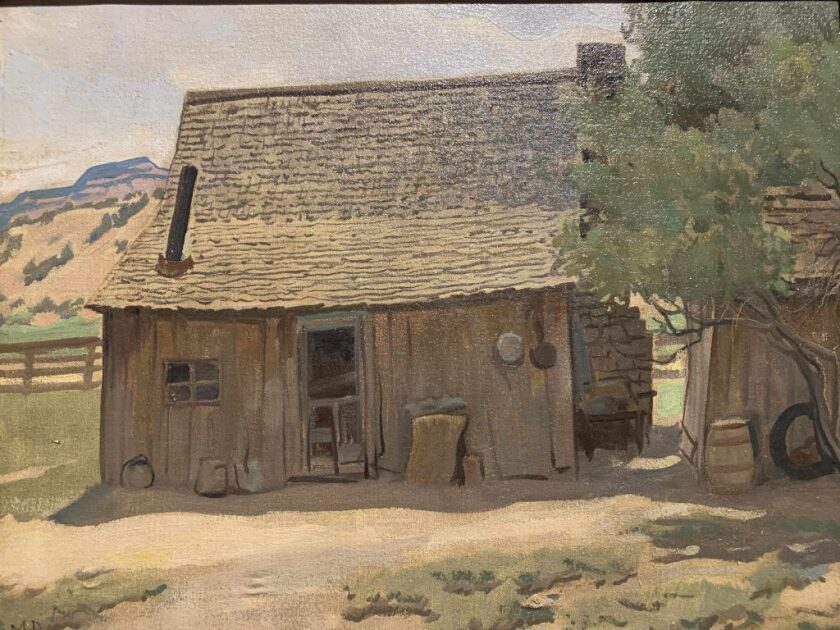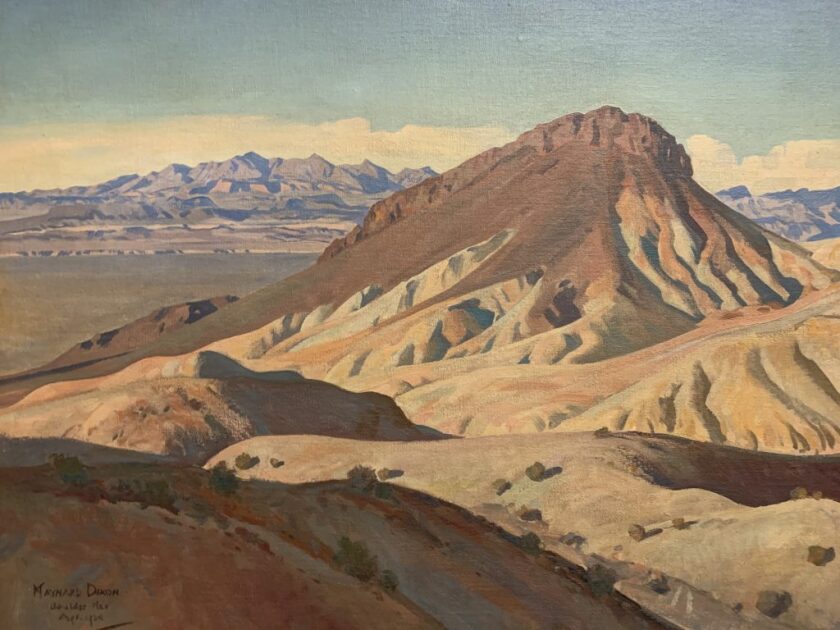Maynard Dixon
Brigham Young University owns the largest collection of Maynard Dixon artworks in the country—spanning 30 years of Dixon’s remarkable career. Most of the works were acquired in 1937 through the foresight and diligent efforts of Herald R. Clark, Dean of the College of Commerce (now the Marriott School of Business). Clark felt strongly that BYU students should have exposure to great artists, musicians, and writers and organized many opportunities for such artists to come to campus.
Clark was familiar with Dixon’s art and traveled to San Francisco in the spring of 1937 to discuss acquiring a number of his works. Clark negotiated the purchase of 85 pieces, and the two men established a friendship that continued until Dixon’s death nine years later. Although not religious, Dixon developed an abiding respect for members of The Church of Jesus Christ of Latter-day Saints and a love of the Utah landscape that is clearly evident in his work. The Museum has continued to collect work by this artist.
Other examples of Dixon’s artworks can be seen in the Rend the Heavens and Becoming America exhibitions in other galleries.

The painting depicts the southern Utah landscape along the Virgin River near Dixon’s home, where he spent much of his later years. Dixon has profound respect for Indigenous peoples of the Southwest, and painted images of their lives, their personalities, and their landscape.
In this image, a group of Native Americans find respite from the scorching noonday sun under a large cottonwood tree, the only patch of shade in this sun-soaked landscape. There is a feeling of quiet repose in the painting, conveyed through Dixon’s strong use of geometric forms—the stable rhythm of the triangles in the teepee and tree, as well as the inward-leaning slopes of the hillside. The repeating horizontal lines cross the canvas in a range of harmonious colors, adding to the sense of autumn tranquility.

Maynard Dixon painted this frontier homestead during his first trip to Utah in the summer of 1933. Dixon explored southern Utah with his wife, Dorothea Lange, and their two young songs. The geology of the area captivated the artist, as did the hardworking character of the “Mormon” settlers.
Dixon’s painting of Levi Walker’s log home in Mt. Carmel captures the simple poetry the artist saw in the lives of these down-to-earth, industrious Utahns. The humble structure with its dusty wooden slats, leaning stove pipe, and array of home implements seems to evoke a passing way of life and a tribute to the honest toil of “Dad” Walker, who would pass away just months later at age 74.
This painting was among original group purchased by the university in Spring 1937.

During the hard years of the Depression, Dixon participated in a federal Public Works of Arts Project documenting the construction of the Boulder (later “Hoover”) Dam in Nevada. Along with the 24 paintings and drawings he created of the working site, Dixon also captured the geological splendor and distinctive atmosphere of its desert surroundings.
Volcanic Cones evidences Dixon’s familiarity with and love of the West’s barren beauty. He carefully balances the details of individual peaks and rivulets with a straightforward geometry; contracts afternoon sun and shadows in varieties of browns, grays, and purple; and distinguishes the foreground with the hazier contrasting range of peaks and clouds in the distance.